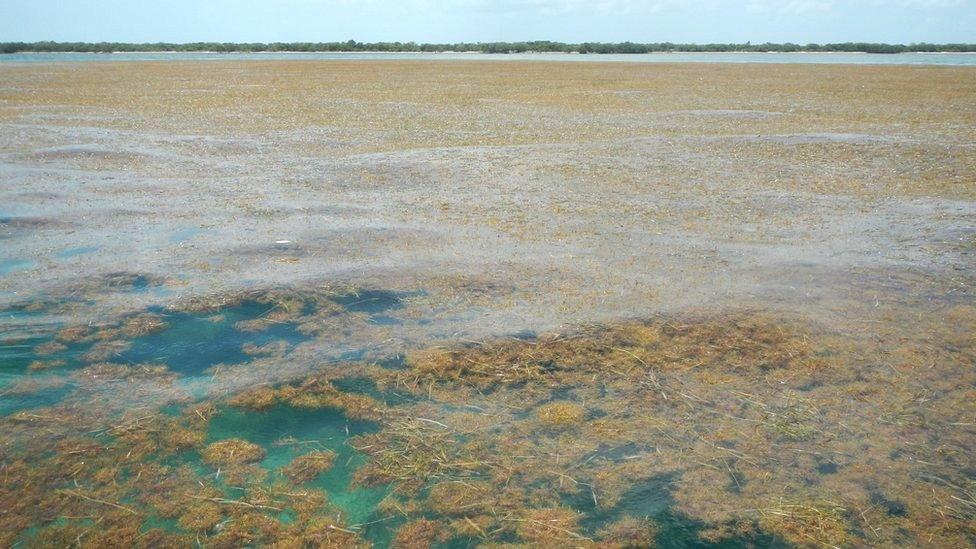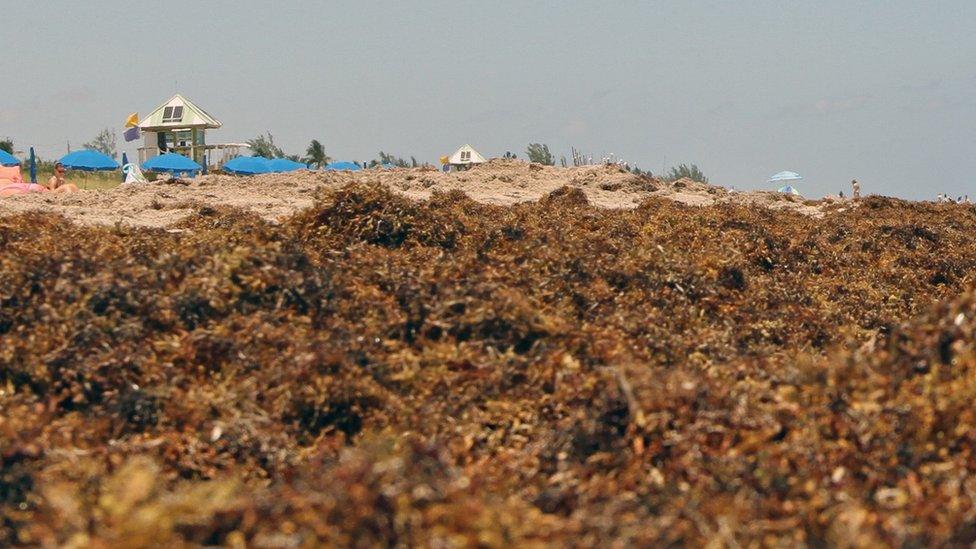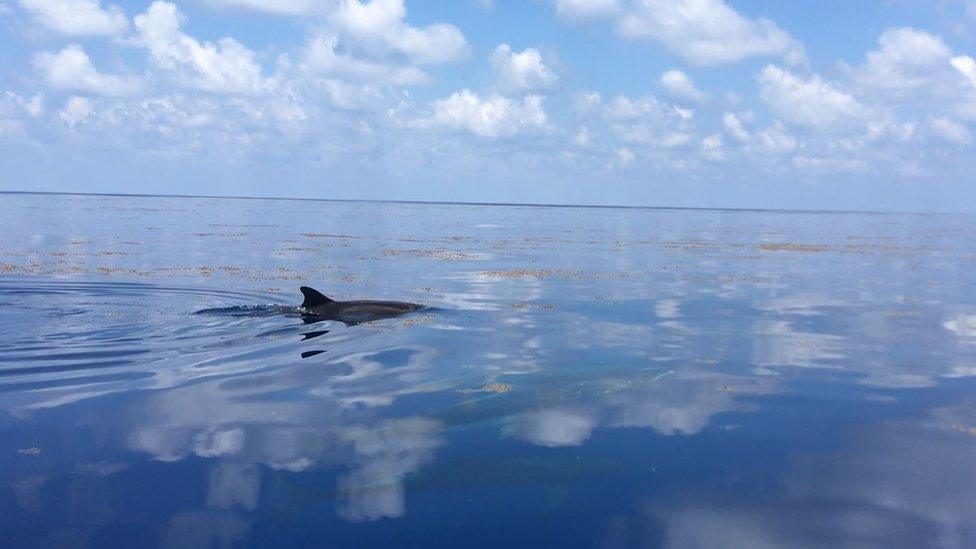Sargassum: The biggest seaweed bloom in the world
- Published

Sargassum in the Florida Keys
A floating mass of seaweed stretching from West Africa to the Gulf of Mexico is now the biggest seaweed bloom in the world, according to satellite observations.
The algal explosion in the Atlantic Ocean and Caribbean Sea could signify a new normal, say US scientists.
Deforestation and fertiliser use are among the factors thought to be driving the growth.
The seaweed has inundated beaches, causing an environmental nuisance.
As of June 2018, the Great Atlantic Sargassum Belt, as scientists call it, extended 8,850km (5,500 miles) and was made up of over 20 million tonnes of biomass.
"The ocean's chemistry must have changed in order for the blooms to get so out of hand," said Dr Chuanmin Hu of the University of South Florida College of Marine Science, who led the study, published in Science, external.

Sargassum on Delray Beach in South Florida in May 2019
The researchers used a 19-year record of satellite data to study the Sargassum, which has bloomed every year from 2011 to 2018, with the exception of 2013.
2011 appeared to be a tipping point, when the algae arrived en mass on shorelines.
"This is all ultimately related to climate change because it affects precipitation and ocean circulation and even human activities, but what we've shown is that these blooms do not occur because of increased water temperature," said Dr Hu.
"They are probably here to stay."

Sargassum contributes to ocean health by providing habitat for sealife
Some species of Sargassum - a group of seaweed - live on the ocean's surface, where they attract fish, birds and turtles.
"In the open ocean, Sargassum provides great ecological values, serving as a habitat and refuge for various marine animals," said co-researcher Dr Mengqiu Wang.
However, too much of the seaweed can smother corals and seagrasses, and end up on beaches, releasing gas that smells like rotten eggs.
Some 1,000km (621 miles) of Mexican beaches have been impacted this year. Removal is time-consuming, expensive, and not always effective.

What is sargassum?

Stringy, brown seaweed that spends its life floating
Traditionally starts life in the Gulf of Mexico and is pushed by currents out into the North Atlantic to float in the Sargasso Sea
Forms rafts that serve as vital feeding and breeding grounds for marine life
In small amounts, it can help nourish beaches.

Follow Helen on Twitter, external.